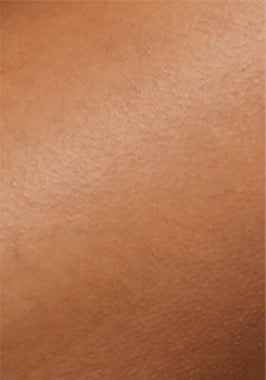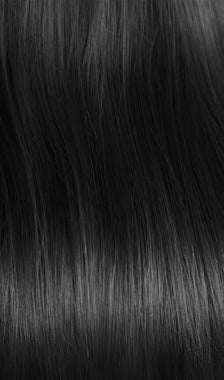This article focuses on PCOS, one of the most common hormonal disorders affecting a large number of women worldwide, and specifically discusses the methods available to effectively eliminate unwanted hair, the main (and most unpleasant) cosmetic problem associated with this condition.
What is PCOS?
PCOS stands for polycystic ovary syndrome, a complex disease that affects 6 to 20% of premenopausal women and is considered one of the most common hormonal and metabolic disorders in women of reproductive age [1]. It is mainly characterized by increased androgen levels (e.g. testosterone), menstrual disorders and/or the presence of small cysts on the ovaries [2].

What causes PCOS and what are the cosmetically relevant symptoms?
The causes of PCOS are not fully understood. It is considered a multifactorial disorder in which the influence of genetics (family history of PCOS) and environmental factors (such as obesity) can play an important role [2].
Nevertheless, PCOS is associated with insulin resistance and higher levels of testosterone (the male sex hormone) compared to normal patients. This increase in testosterone levels is responsible for the further development and manifestation of cosmetically concerning PCOS symptoms such as acne, hair loss and hirsutism [2].
Why is hair removal necessary for PCOS?
As mentioned above, one of the main clinical symptoms of PCOS is hirsutism, a condition in which the hair on the female body begins to grow in the final stage (thick and dark) according to the “male pattern”, resulting in visible hair on androgen-sensitive areas such as the face, neck, chest, lower back, buttocks and inner thighs [3].
This can be challenging. Up to 80% of women with PCOS are expected to develop hirsutism, which is considered the most troubling and discouraging feature of the syndrome [4]. For this reason, finding the most effective methods to remove excess hair is an important task.

How to remove unwanted hair?
In general, the treatment of hirsutism focuses on a dual approach : 1) pharmacological treatment to lower androgen or insulin levels and 2) removal of the hair already present [5].
Hair removal alone will not bring the desired results if the underlying hormonal imbalance is not corrected. On the other hand, pharmacological treatment alone can only be partially effective, so it must always be combined with hair removal methods [5].
Comparison of the different hair removal methods
Among the different hair removal methods that exist, electrolysis, laser and IPL are certainly the most effective in ensuring long-term hair reduction. Below we will describe and compare each of them, but we will first say a few words about the temporary hair removal methods that we all know, such as shaving or waxing.
1. Temporary hair removal
Methods such as shaving, waxing, chemical depilatories or thread removal are known to be useful and affordable ways to control hair growth. However, they only provide a short-term effect, requiring more maintenance and more frequent treatments in PCOS due to the rapid hair growth caused by hormonal imbalance. They can also lead to increased skin sensitivity [6], redness and irritation [1].

For this reason, women with PCOS may benefit from other options, especially those that provide permanent hair reduction.
2. Electrolysis
Electrolysis is the FDA-approved method for permanent hair removal for hirsutism. This method involves applying an electric current to each individual hair using a fine needle inserted into the hair follicle [7] to create a permanent change in the hair.
The advantages? Permanent hair removal. It can be used on any hair and skin color [7].
The disadvantages? It is a painful, time-consuming and expensive technique that can only be performed by an experienced technician. Improper electrolysis can lead to injuries such as pigmentation and scarring [8].
For all these reasons, laser and IPL devices have emerged as efficient and safe methods for treating hirsutism in PCOS (as proven by several studies) [6].
3. Laser
Although lasers do not provide permanent hair removal, they can provide fairly sustained hair reduction. Lasers are the most popular method currently approved for treating hirsutism in PCOS. A single session is expected to reduce hair by 10-40% and repeated sessions by up to 90%, with results lasting up to 12 months [9].

How does the procedure work? Lasers can cause selective photothermolysis, that is, the thermal destruction of hair by delivering sufficient energy at a specific wavelength that is absorbed by the melanin in the hair. Dark hair, which contains large amounts of melanin, absorbs these wavelengths immediately and is most susceptible to laser-induced damage [10].
Which lasers are used? Lasers with long wavelengths (600-1000 nm) are preferred because they penetrate better into the deep hair root. In particular, alexandrite (755 nm), diode (810 nm) and Nd:YAG lasers (1064 nm) are often used for hair removal [11], with alexandrite being the most effective laser for treating hirsutism in PCOS [6][12].
The advantages? Selective hair damage, less time required, longer hair-free interval and fewer side effects [10].
The disadvantages? The method is expensive and must be performed by a professional in a medical facility [1]. Darker skin types may experience possible adverse effects, so individual characteristics and skin response must be evaluated to select the best laser and appropriate settings [8].
4th IPL
IPL stands for Intense Pulsed Light and is a popular non-laser treatment that is also suitable for treating hirsutism in PCOS [6]. Like lasers, IPL devices can also produce long-term hair reduction.
How does it work? IPL consists of a high-intensity light source that emits non-coherent light in a wide range of wavelengths (500 to 1200 nm). It is based on the principle of selective photothermolysis, which attacks the melanin in the hair root to destroy it thermally in a relatively selective manner at suitable wavelengths [6].
The advantages? IPL offers the possibility of performing the treatment with home-use devices , which are reported to be as successful as laser systems due to the same thermal effect. IPL is less expensive and has a larger area, allowing for faster treatment [11].
The disadvantages? A greater number of treatment sessions may be required to achieve the expected results [11]. The treatment may be more effective in people with lighter skin tone and darker hair. Side effects such as pain, redness, swelling and pigmentation have been reported [8], but these are rare and temporary as it is a safe method when used correctly [6].
To avoid possible side effects, modern IPL devices are equipped with cooling systems to protect the skin. The Ulike IPL devices, for example, use the patented sapphire ice cooling technology to enable a virtually painless treatment.
Why is IPL the most suitable hair removal method for PCOS?
This is due to the many advantages and proven effectiveness, which is comparable to that of lasers.
IPL technology undoubtedly allows for greater versatility and flexibility in therapeutic options for treating hirsutism [11]. It is an affordable, convenient, safe and easy-to-use alternative to effectively reduce unwanted hair at home and, due to its large surface area, can treat a variety of anatomical sites, including larger areas affected by PCOS (such as the back, chest and legs) [13].

But let's look at the scientific evidence on this topic, shall we?
Although some studies have shown that the Alexandrite laser is more effective than IPL for reducing facial hirsutism in women with PCOS [12], other studies have proven that IPL can be almost as effective as other types of lasers or even better [6].
In one study, patients with and without PCOS were shown to have the same safety profile and efficacy in terms of facial hair reduction, hair thickness and density after 6 treatments with IPL [6], which means that IPL is a suitable technique that is equally effective for hair reduction regardless of the condition. The percentage of hair reduction at the end of the study was 52.87% and 73.81% for the upper lip and chin, respectively [6].
In terms of safety, most studies have found that IPL is more tolerable and has fewer side effects than laser, which can be attributed to IPL's integrated cooling systems [6].
Conclusion
Since most women with PCOS are likely to suffer from hirsutism, hair removal methods are excellent tools for eliminating unwanted hair. Laser and IPL are the most popular methods for this purpose, resulting in long-term hair reduction after several treatments. The convenience and advantages of IPL over laser make IPL devices the first choice for women with PCOS, but it requires commitment and patience to achieve the desired results over time, along with accompanying pharmacotherapy to treat the underlying hormonal imbalances.
references
[1] Escobar-Morreale, H.F. (2018). Polycystic ovary syndrome: definition, aetiology, diagnosis and treatment. Nature Reviews Endocrinology , 14 (5), 270–284. https://doi.org/10.1038/nrendo.2018.24
[2] Ndefo, UA (2013, June 1). Polycystic Ovary Syndrome: A Review of Treatment Options With a Focus on Pharmacological Approaches . PubMed Central (PMC). https://www.ncbi.nlm.nih.gov/pmc/articles/PMC3737989/
[3] Spritzer, PM, Marchesan, LB, Santos, BRD, & Fighera, TM (2022). Hirsutism, Normal Androgens and Diagnosis of PCOS. Diagnostics , 12 (8), 1922. https://doi.org/10.3390/diagnostics12081922
[4] McGill, DJ, Hutchison, CA, McKenzie, ED, McSherry, E., & Mackay, I. (2007a). Laser hair removal in women with polycystic ovary syndrome. Journal of Plastic Reconstructive and Aesthetic Surgery . https://doi.org/10.1016/j.bjps.2006.11.006
[5] Moghetti, P., & Toscano, V. (2006). Treatment of hirsutism and acne in hyperandrogenism. Best Practice & Research Clinical Endocrinology & Metabolism , 20 (2), 221–234. https://doi.org/10.1016/j.beem.2006.03.003
[6] Thacker, PM, & Kumar, P. (2016). Near infrared pulsed light for permanent hair reduction in Fitzpatrick skin types IV and V. Journal of Cutaneous and Aesthetic Surgery , 9 (4), 249. https://doi.org/10.4103/0974-2077.197078
[7] Rashid, R., Mir, SF, Kareem, O., Ali, T., Ara, R., Malik, A., Amin, F., & Bader, GN (2022). Polycystic ovarian syndrome-current pharmacotherapy and clinical implications. Taiwanese Journal of Obstetrics & Gynecology , 61 (1), 40–50. https://doi.org/10.1016/j.tjog.2021.11.009
[8] Somani, N., & Turvy, D.N. (2014). Hirsutism: An Evidence-Based Treatment Update. American Journal of Clinical Dermatology , 15 (3), 247–266. https://doi.org/10.1007/s40257-014-0078-4
[9] Hosseini, M., Ehsani, AH, Fakour, Y., Aryanian, Z., Elhamfar, M., & Noormohammadpour, P. (2022). Effect of Laser-Assisted Hair Removal (LAHR) on the Quality of Life and Depression in Hirsute Females: A Single-Arm Clinical Trial. Journal of Lasers in Medical Sciences , 13 , e46. https://doi.org/10.34172/jlms.2022.46
[10] Bhat, YJ, Bashir, S., Nabi, N., & Hassan, I. (2020). Laser Treatment in Hirsutism: An Update. Dermatology Practical & Conceptual , e2020048. https://doi.org/10.5826/dpc.1002a48
[11] Karaca, Ş., Kaçar, SD, & Ozuğuz, P. (2012). Comparison of SHR Mode IPL System with Alexandrite and Nd: YAG Lasers For Leg Hair Reduction. Balkan Medical Journal , 29 (4), 401–405. https://doi.org/10.5152/balkanmedj.2012.033
[12] McGill, DJ, Hutchison, CA, McKenzie, ED, McSherry, E., & Mackay, I. (2007b). A randomized, split-face comparison of facial hair removal with the alexandrite laser and intense pulsed light system. Lasers in Surgery and Medicine , 39 (10), 767–772. https://doi.org/10.1002/lsm.20584
[13] Goldberg, DJ (2012, June 1). Current Trends in Intense Pulsed Light . PubMed Central (PMC). https://www.ncbi.nlm.nih.gov/pmc/articles/PMC3390232/






























